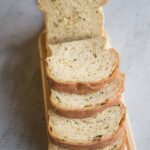
Sour Cream Mashed Potato Chives Bread Loaf
Servings: 12 servings
Calories: 180kcal
Inspired by creamy mashed potato with sour cream and chives that we love as a side dish. This loaf of bread is soft and flavorful. Perfect as a sandwich bread.
Print Recipe
Ingredients
- 250 g leftover mashed potato
- 375 g bread flour (12.7% protein content) plus more as needed
- 227 g full-fat sour cream
- 30 g water or more as needed
- 2 tsp instant yeast
- 1 tsp garlic powder omit if your mashed potato is seasoned with garlic
- 1 ½ tsp salt adjust the amount if your mashed potato is already seasoned
- 15 g sugar
- 50 g finely chopped chives
Instructions
Prepare the dough:
- Put the mashed potatoes and the rest of the ingredients for the dough in a mixing bowl of a standmixer. Use the hook attachment to stir the mixture so the flour won't fly all over when you start the machine
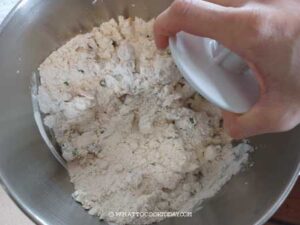
- Start mixing at low speed (speed 2 on KA) to mix all the ingredients for about 2-3 minutes to form a rough dough.
- I can't tell you exactly how much water you will need because it really depends on the mashed potatoes you use. You can start with about 2 Tbsp of water. If it seems too dry, add a bit of water, one teaspoon at a time. The dough should feel soft and just slightly sticky to the touch. Increase the speed to the next level (speed 4 on KA) and continue kneading until the dough is smooth and soft, this may take about 8-10 minutes. You may need to stop halfway once or twice, and scrape the sides of the bowl so the dough is kneaded properly
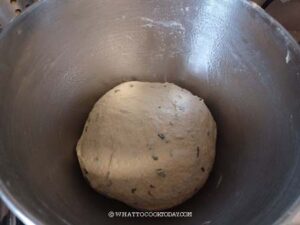
- When you gently stretch the dough thinly, it won't break easily
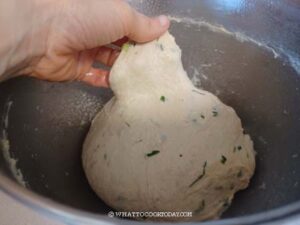
First proofing:
- Round up the dough and put it in a lightly oiled bowl. Cover the bowl and put it in a warm place, around 82-90 F, and let it ferment until it doubles in volume, about 1 – 1 1/2 hours (this time varies depending on temperature). When you poke your finger into the dough, the indentation stays and the dough doesn't collapse
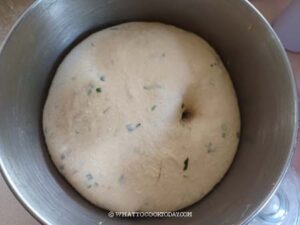
Shaping:
- Grease the 9 x 5 inch loaf pan or 9 x 4 x 4 inch pan
- Deflate the dough by folding the edge towards the center several times. Transfer to a lightly floured work surface.
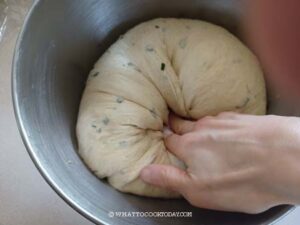
- Cover and let the dough rest for 5 minutes to relax the gluten.
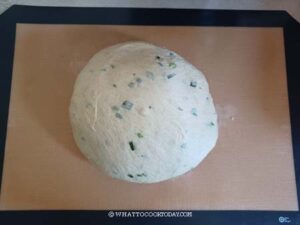
- Use your hands to pat the dough out into a 10 x 12 inch rectangle. You can use a rolling pin to do so. Make sure you push out all the air. If the dough keeps retracting back, stop rolling and cover the dough with plastic wrap and give it a rest for 5 minutes to relax the gluten and try to roll again
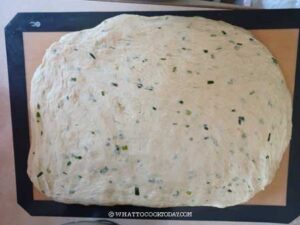
- Fold the dough to meet in the center
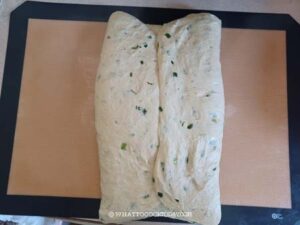
- Then roll the dough down to form a large log and use the heel of your hand to seal as you roll down so the roll is tight.
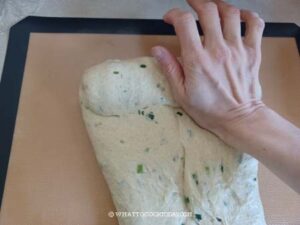
- Pinch the seams shut with your fingers
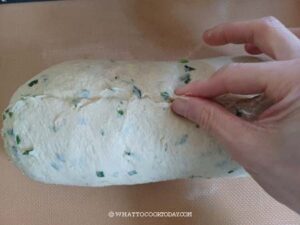
2nd proofing:
- Transfer the dough to the prepared loaf pan. Cover with a cling wrap (I sprayed with non-stick spray to prevent sticking) and place at a warm place again to let it ferment until the dough is level with the rim of the pan if you are using USA pan small Pullman pan, or about 1 inch above the rim if you are using 9 x 5 loaf pan, about 45 minutes to 1 hour, depending on temperature
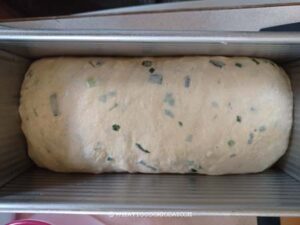
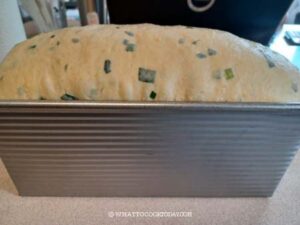
Baking:
- 10 minutes before the end of the proofing time, preheat the oven to 350 F (180 C) for conventional oven. For convection oven, lower the temperature by 20 F /15 C
- Put the pan in the middle rack and bake for 45-50 minutes or until the top is golden brown and the internal temperature at the center of the bread is 190 F (88 C)
Cool down:
- Remove from the oven and let the bread cool down in the pan for about 2 minutes and then wiggle the bread out from the pan. You can rub some butter on top of the bread loaf if you want.
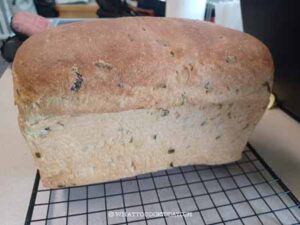
- Let the bread cool down completely on the rack, this may take 2-3 hours. Do not cut into a warm bread
Nutrition
Serving: 1serving | Calories: 180kcal | Carbohydrates: 30g | Protein: 6g | Fat: 4g | Saturated Fat: 2g | Polyunsaturated Fat: 0.4g | Monounsaturated Fat: 1g | Cholesterol: 11mg | Sodium: 304mg | Potassium: 177mg | Fiber: 2g | Sugar: 2g | Vitamin A: 300IU | Vitamin C: 7mg | Calcium: 31mg | Iron: 1mg